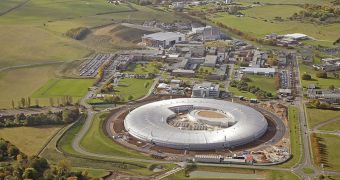Two teams of British scientists from the Oxford University have recently managed to lay the groundwork for the development of artificial bacterial cells, capable of responding and adapting to new stimuli in their environment. This is something that only living organisms have proven to be able to do thus far, therefore doing the same thing artificially could open up a wide array of research fields to future innovation. The Oxford science groups were led by Professors Judith Armitage and David Stuart, PhysOrg reports.
The new investigation also carries considerable implications for biosensor research. The experts proved that, at least in theory, it should be possible to outfit living cells with synthetic signaling circuits. That would enable an entirely new class of sensing devices. Over millions of years of evolution and natural selection, bacterial cells have learned how to harness signaling mechanisms in a way that allows them to quickly adapt to changes in their environment. This is one of the main traits that permitted them to spread around the globe, in the harshest environments possible where nothing else survived, and also granted them the ability to become immune to drugs we threw at them.
One of the most important signaling mechanisms is a pair, consisting of a protein known as kinase and another protein called a response regulator. In some bacterial cells, there are as much as 150 such pairs, each of them unique, and different from the other ones. The secret here is controlling the specificity between the two components of a pair, so that no cross-signaling occurs. What the new investigation did was focus on the source of this specificity. For this reason, the structural biology and the biochemistry teams pooled their resources together.
They looked at the proteins with atomic-scale resolution, using X-ray crystallography. This approach creates extremely bright flashes of light that aid investigators. For this research, the UK's national synchrotron facility, the Diamond Light Source, was used. The researchers managed to crack the code in one of these pairs, which they collected from the bacterium Rhodobacter sphaeroides.
“This is a significant step on the road to identifying the critical amino acid interface that allows discrimination between apparently related proteins and their partners, and a step along the road to rational design of protein signaling networks,” Armitage says. “The aim is to understand the system so well that you're able to change it in any way you like. The dream will be a synthetic cell that does exactly what you want,” Oxford postgraduate student Christian Bell, who has been part of both science groups, adds.

 14 DAY TRIAL //
14 DAY TRIAL //